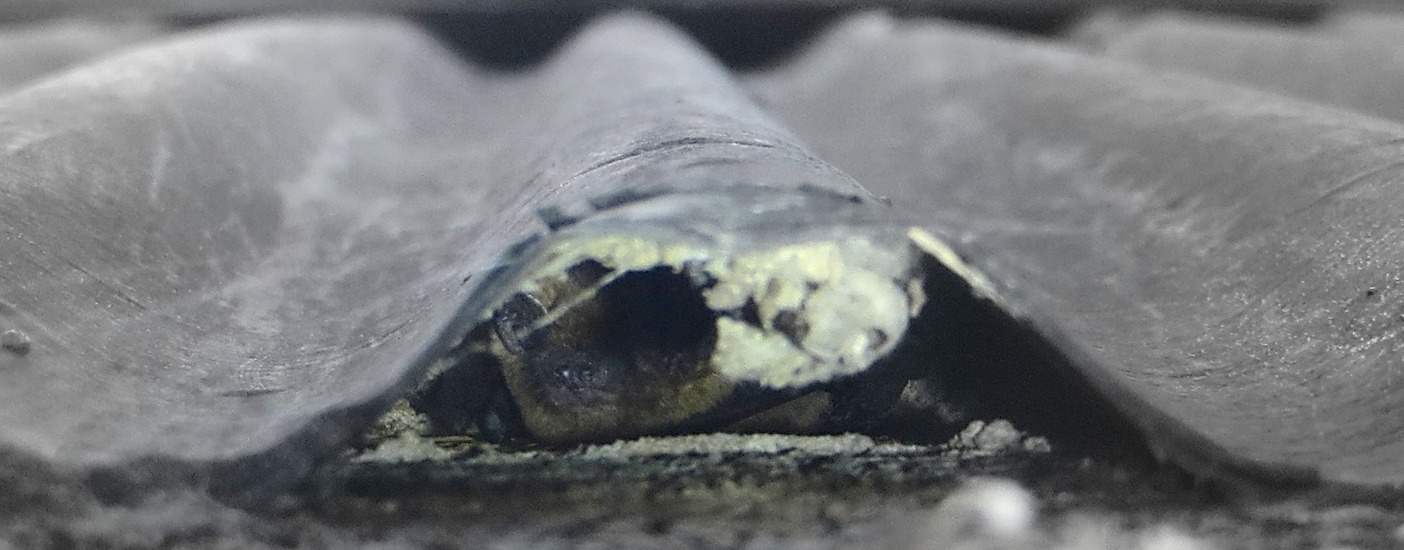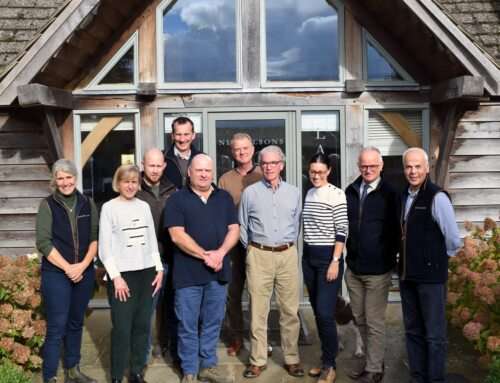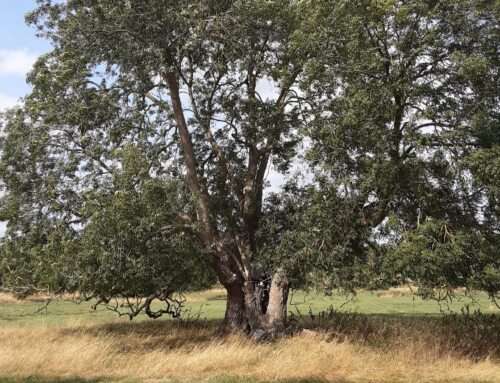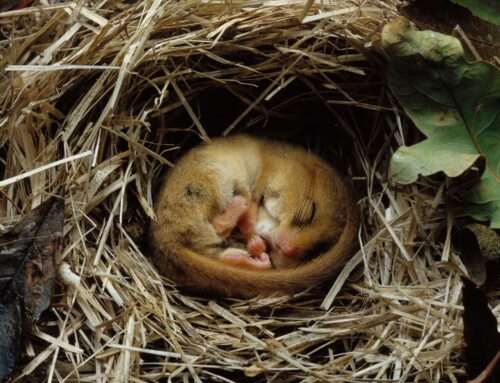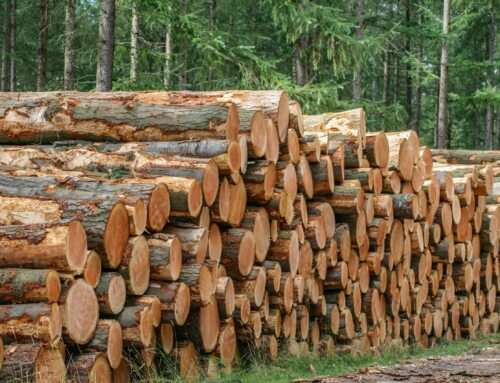Guidance on Bat Surveys
By Rachel Crapper, Ecological Consultant
If you listen to old myths, bats have been portrayed as nightmarish figures that may get tangled in your hair or be a sign of a bad omen! However, this lovely (and extremely interesting) group of species are actually harmless.
There are 18 species of bats in Britain and during the night they use echolocation to navigate their surroundings, communicate, and find food. During the day they utilise a variety of features for roosting, which can include building roofs, trees and bat boxes – which means they may be roosting in your property!
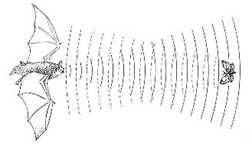
Bat using echolocation to hunt its prey
Reference: http://www.nhc.ed.ac.uk/index.php?page=24.134.166.169.182
Nicholson’s has recently incorporated a new ecology team! Check us out here https://www.nicholsonsgb.com/ecology/meet-the-team-ecology/
This means that when Garden Design and Landscape projects are being carried out for our clients, we can get our in-house Ecology team involved. Bat work makes up a significant portion of our ecological surveys throughout the spring and summer months, and it is a very common species group that must be mitigated for as part of proposed developments.
There can be many questions when it comes to bat surveys. What type of survey do I need? How are they carried out? And at what time of year? Survey work for bats is seasonally dependent and therefore needs to be planned accordingly.
Please note that all bats and their roosts are protected by UK and European Law. It is illegal to kill, injure, capture or disturb bats, or obstruct access to, damage or destroy their roosts. If you think the proposed works may impact bats within your site, please contact a member of our ecology team for further advice.
Preliminary Roost Assessment
Prior to conducting seasonal bat surveys, an assessment of the building(s) or tree(s) to be affected must be undertaken to determine the suitability of these features for bats based on the number and type of roosting features found. Preliminary roost assessments can be undertaken at any time of the year and will provide further details on the next stage of bat surveys.
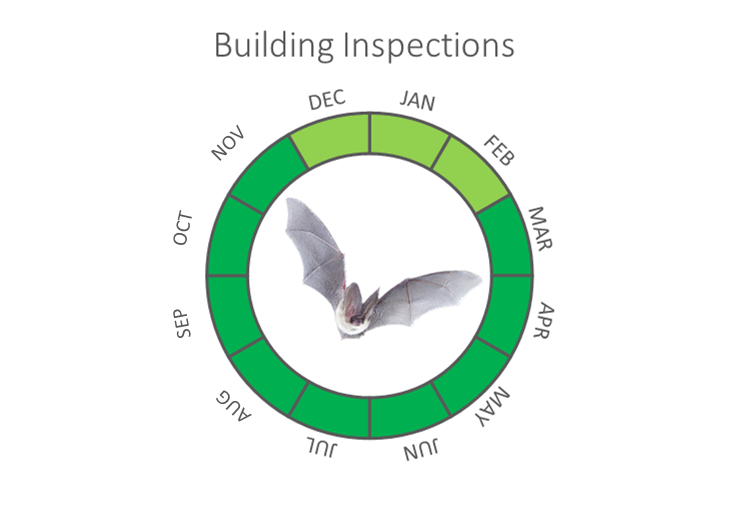
Building Inspections
Building assessments are required when redevelopments, renovations or demolition works could affect roosting bats. This can include:
- Building renovation, conversion and demolition.
- Roof repairs and replacements
- Loft conversions and insulation.
These inspections consist of an internal check of any lofts or cellars and an external check of the building which is subject to planning. It can be carried out throughout the year, however avoiding the winter months is preferred, as the likelihood of finding roosts is reduced. If a roost is identified during the assessment, roost emergence and re-entry surveys (please see above) will be required.
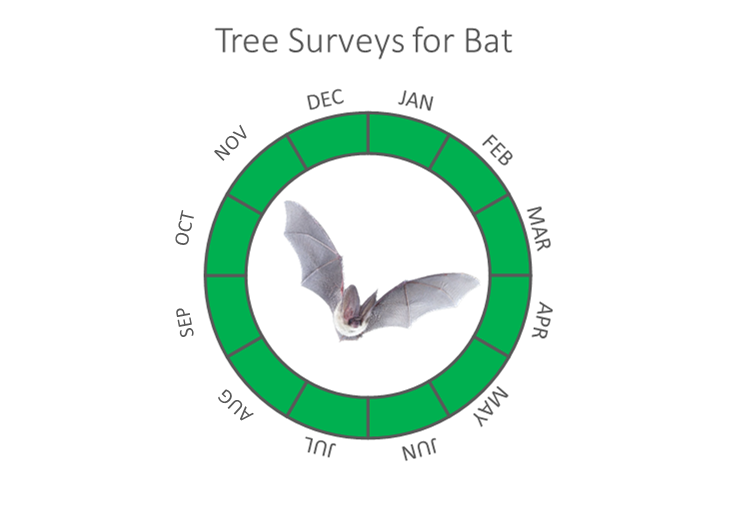
Preliminary Ground Level Tree Roost Assessment
A Preliminary Ground Level Roost Assessment for Potential Roost Features (PRFs) will be required for all trees that will be impacted by proposed works. This survey can be carried out at any time of year. These assessments require an ecologist to make an external assessment of the tree from the ground, identifying features which could provide entry and exit points and any evidence of bats. If the tree is graded as negligeable, no further surveys will be needed; however, if the tree is graded low, moderate or high; it will need further surveys such as a Tree Climbing PRF Inspection or a Nocturnal Tree Survey (please see below).
Tree Climbing PRF Inspection
The objective of a Tree Climbing Inspection is to confirm the presence or absence of roosting bats within identified PRFs. During the inspection the surveyor will use climbing equipment to access the potential roosting features on the tree. The features will be physically searched with the aid of an endoscope for the presence of and/or evidence of bats. This survey can be carried out at any time of the year.
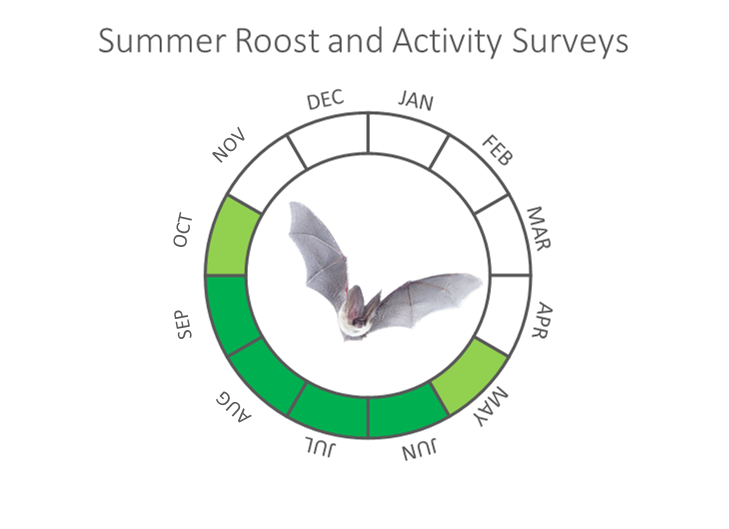
Roost Emergence and Re-entry Surveys
The aim of these surveys is to observe bats emerging or re-entering features identified during the preliminary roost assessment. Summer is the best time of year to carry out these surveys, with the optimal survey period being May to August. For structures that are of Low Suitability for roosting bats a minimum of one survey is typically required; however more surveys may be required depending on how suitable the structure is for roosting bats. It is important to bear in mind that all surveys must be undertaken at least two weeks apart and in good weather conditions, so it is recommended to get these surveys organised as soon as possible.
Activity Surveys
Activity surveys are usually carried out between April and October. These surveys determine flight paths, species present and features within the habitats on site used by bats. The level of survey effort required will be determined by a preliminary ecological appraisal. A minimum of three activity transects should be carried out for sites of Low Suitability for foraging and commuting bat, comprising of a mix of dusk and dawn surveys. Sites of higher suitability for bats would require up to two survey visits per month between April and October.
Nocturnal Surveys
If a potential roost feature has been identified during the Preliminary Ground Level Tree Roost Assessment, but the tree is not safe to climb; a nocturnal survey may be required to establish the presence or absence of roosting bats. Nocturnal surveys need to be carried out at dusk and/or dawn during the bat most active season from May to September.

Bat Hibernation Roost Surveys
These surveys involve an inspection of trees and buildings, supported by the use of remote bat detectors. A minimum of two site visits is required between December to February, with remote detectors deployed for two weeks in each of the winter months (November-February) to identify if bats are present.
Contact Us
Please note that survey guidelines are due to change some time this year. Our ecology team will provide you with the most up-to-date advice available.
If your development proposal is likely to have an impact on bats, their roosts, or their foraging and commuting habitats, please contact our ecology team for more guidance. You can contact us on:
☎ Oxford Office: 01869 340342 ☎ Northampton Office: 01536 408840 ✉ contact@nicholsonsgb.com
